When choosing between micro-hydro and solar for your home energy system, consider your location and resources. Micro-hydro requires a consistent water source and elevation drop, offering high efficiency and 24/7 power. Solar needs ample sunlight and works well in various climates. Cost-wise, solar has become more affordable, while micro-hydro has higher upfront costs but a longer lifespan. Both have minimal environmental impact when properly implemented. Your energy needs, local regulations, and available incentives should also factor into your decision. Evaluating these aspects will help you determine which system best suits your home's unique situation.
Understanding Micro-Hydro Power Systems
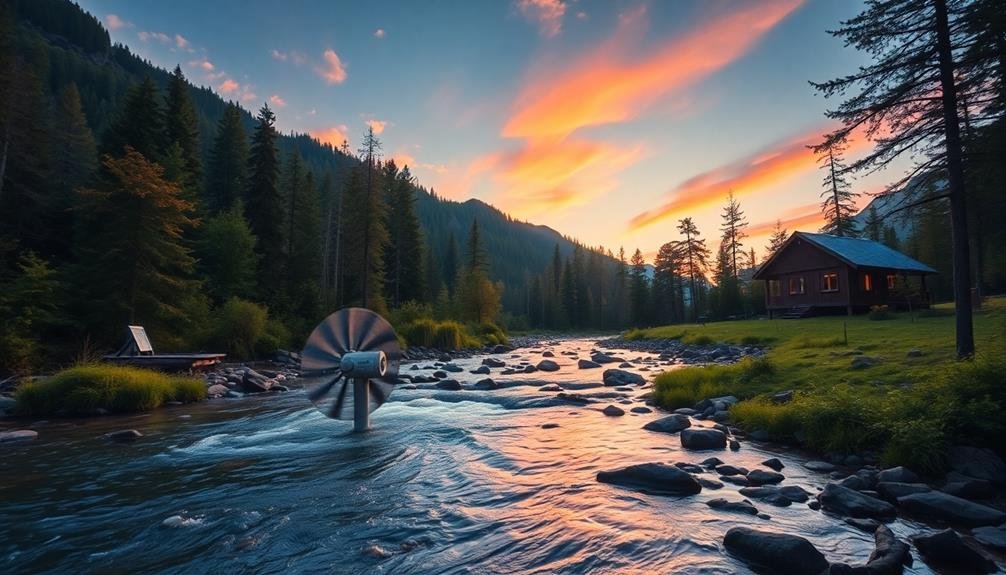
Micro-hydro power systems tap into the energy of flowing water to generate electricity for homes and small communities. These systems work by diverting a portion of a stream or river through a turbine, which spins a generator to produce electricity. You'll need a consistent water source with sufficient flow and elevation drop to make this system viable.
The key components of a micro-hydro system include an intake, penstock, turbine, generator, and tailrace. The intake captures water from the stream, while the penstock channels it to the turbine. The turbine converts the water's kinetic energy into mechanical energy, which the generator then transforms into electricity. The tailrace returns the water to its original course.
You'll find micro-hydro systems are highly efficient, often operating at 70-90% efficiency. They provide a steady, reliable power source that can operate 24/7, unlike solar or wind systems.
However, they're site-specific and require careful planning and environmental consideration. You'll need to assess your property's water resources, obtain necessary permits, and consider the impact on local ecosystems before implementing a micro-hydro system.
Solar Energy Basics
Harnessing the sun's power, solar energy systems have become increasingly popular for homeowners seeking sustainable energy solutions. These systems use photovoltaic (PV) panels to convert sunlight into electricity, providing a clean and renewable energy source for your home.
Solar panels consist of silicon cells that generate an electric current when exposed to sunlight. You'll typically install these panels on your roof, where they can capture maximum sunlight throughout the day. The electricity produced is direct current (DC), which an inverter then converts to alternating current (AC) for use in your home.
The efficiency of your solar system depends on factors like panel quality, orientation, and local climate. You'll need to evaluate your home's energy consumption and available roof space when sizing your system.
Many homeowners opt for grid-tied systems, allowing them to draw power from the grid when needed and sell excess electricity back to utility companies.
While the initial investment can be substantial, solar systems often pay for themselves over time through reduced energy bills and potential tax incentives.
You'll also contribute to reducing your carbon footprint and increasing your home's energy independence.
Cost Comparison
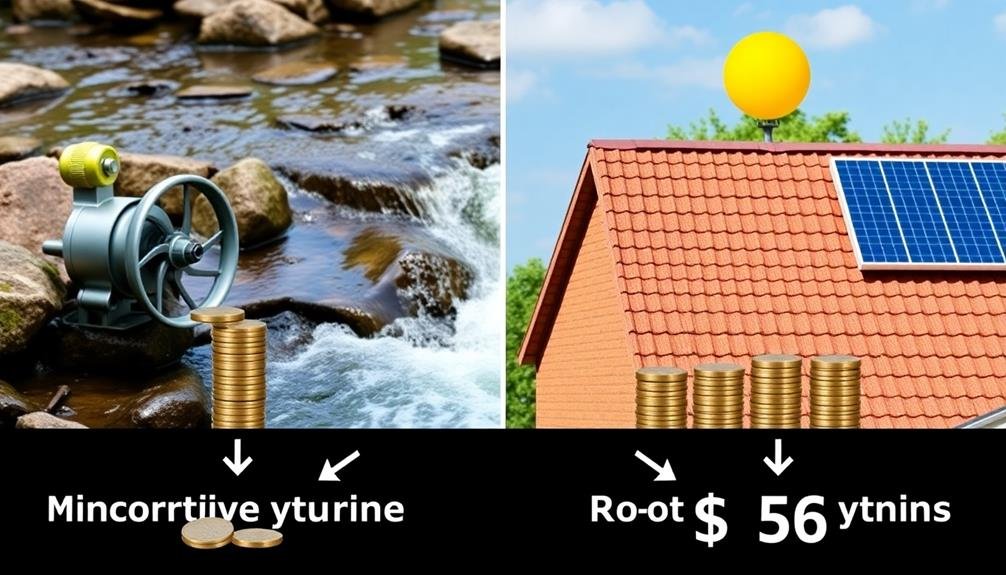
Three main factors influence the cost comparison between different home energy systems: initial investment, ongoing expenses, and long-term savings.
For micro-hydro systems, you'll face higher upfront costs due to equipment and installation, especially if you need to construct a dam or pipeline. Solar panels, on the other hand, have become increasingly affordable, with prices dropping noticeably in recent years.
Ongoing expenses for micro-hydro systems include regular maintenance of turbines and waterways, while solar panels require minimal upkeep. You'll need to factor in occasional inverter replacements for both systems.
Micro-hydro typically generates more consistent power, potentially reducing your reliance on the grid and lowering electricity bills. Solar production varies with weather and seasons, but advances in battery technology are improving energy storage capabilities.
Long-term savings depend on your location and energy needs. Micro-hydro systems can last 50+ years with proper maintenance, while solar panels typically have a 25-30 year lifespan.
Consider your property's resources: if you have a reliable water source, micro-hydro might offer better returns. For most homeowners, solar's lower initial cost and easier installation make it an attractive option.
Environmental Impact Assessment
When considering home energy systems, you'll want to evaluate their environmental impacts.
Compare how different systems might disrupt local ecosystems, looking at factors like land use, noise pollution, and wildlife effects.
You should also analyze the carbon footprint of each option, considering both manufacturing processes and long-term operational emissions.
Ecosystem Disruption Comparison
As we evaluate the environmental impact of various home energy systems, it's crucial to compare their potential for ecosystem disruption. Micro-hydro and solar systems both offer renewable energy solutions, but their effects on local ecosystems differ markedly.
Micro-hydro systems can alter river ecosystems by changing water flow and temperature, potentially affecting aquatic life and riverside habitats. However, well-designed systems minimize these impacts through fish-friendly turbines and careful water management.
Solar systems, on the other hand, have minimal direct ecosystem disruption once installed. Their primary impact comes from land use and the manufacturing process of panels and batteries.
| Aspect | Micro-Hydro | Solar |
|---|---|---|
| Land Use | Minimal | Moderate |
| Water Impact | Moderate | Minimal |
| Wildlife | Potential fish disruption | Potential bird collisions |
| Habitat Change | Localized river changes | Minimal |
When choosing between micro-hydro and solar, consider your property's specific characteristics and local ecosystem. Micro-hydro may be suitable if you have a consistent water source and can implement eco-friendly designs. Solar is often less disruptive overall but requires more space. Ultimately, both systems can be environmentally sound choices when properly implemented.
Carbon Footprint Analysis
Delving into the carbon footprint analysis of home energy systems, it's essential to evaluate the full lifecycle emissions of each option. For micro-hydro systems, you'll find that their carbon footprint is primarily concentrated in the manufacturing and installation phases. Once operational, they produce clean energy with minimal ongoing emissions.
Solar panels, on the other hand, have a more notable initial carbon footprint due to the energy-intensive production process. However, they quickly offset this through years of clean energy generation. You'll need to take into account the emissions associated with panel production, transportation, and installation.
When comparing the two, factor in your local climate and resources. Micro-hydro systems may have a lower overall carbon footprint in areas with consistent water flow, while solar panels might be more efficient in sunny regions.
You should also account for the lifespan of each system and potential recycling at end-of-life.
Don't forget to evaluate the emissions saved by reducing your reliance on grid electricity. Both options considerably decrease your long-term carbon footprint compared to conventional energy sources, making them environmentally sound choices for your home energy needs.
Energy Output and Efficiency
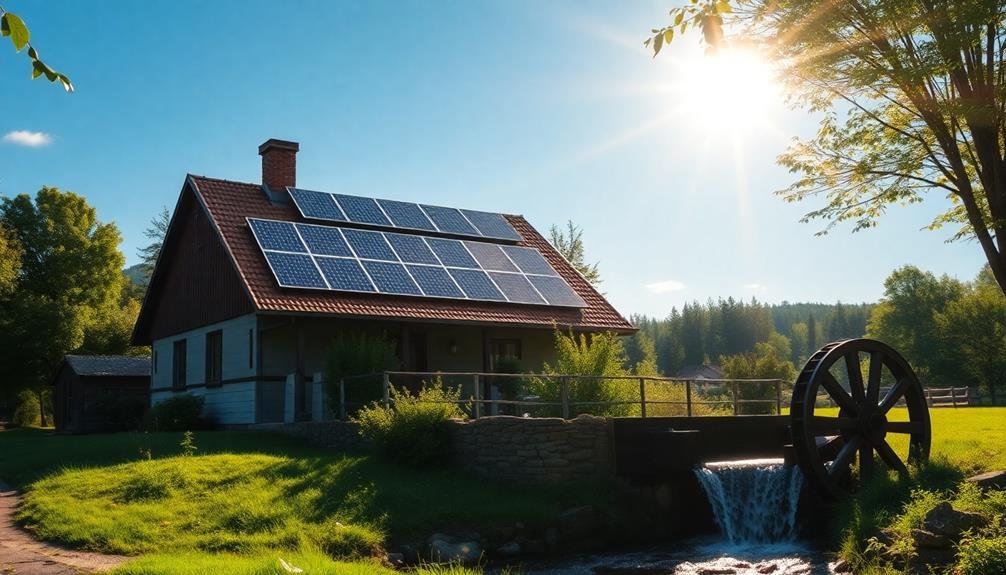
Understanding the energy output and efficiency of home energy systems is vital for maximizing their benefits. When comparing micro-hydro and solar systems, you'll need to take into account several factors.
Micro-hydro systems can generate power 24/7, providing a consistent energy output if you have a reliable water source. They're highly efficient, often converting 70-90% of the water's energy into electricity.
Solar panels, on the other hand, only produce energy during daylight hours and are affected by weather conditions. Their efficiency typically ranges from 15-22%, but they're improving rapidly.
You'll need to calculate your energy needs and compare them to the potential output of each system. For micro-hydro, assess your water flow and head (vertical drop) to determine power generation. For solar, evaluate your roof's orientation, shading, and local climate.
Both systems can be complemented with battery storage to increase efficiency and provide power during low-output periods.
Remember that regular maintenance is essential for peak performance. By carefully evaluating these factors, you can choose the system that best meets your energy needs and maximizes efficiency.
Installation Requirements
When considering a home energy system, you'll need to assess your property's land and water access.
You'll also have to acquire the necessary equipment and obtain required permits from local authorities.
Understanding these installation requirements is essential for a smooth and compliant setup of your chosen energy system.
Land and Water Access
The installation of home energy systems hinges upon access to suitable land and water resources. For micro-hydro systems, you'll need a reliable water source with sufficient flow and head (vertical drop). Ideally, you should have a stream or river on your property with a minimum flow rate of 10 gallons per minute and a head of at least 2 feet.
The water rights in your area may affect your ability to harness this resource, so check local regulations.
For solar systems, you'll need adequate roof space or open land that receives ample sunlight throughout the day. South-facing roofs or areas with minimal shading are ideal.
You'll want to guarantee your roof can support the weight of solar panels, which typically range from 2-4 pounds per square foot.
Both systems require space for equipment installation. Micro-hydro systems need room for a turbine, generator, and control system, often housed in a small shed near the water source.
Solar systems require space for inverters and batteries if you're planning an off-grid setup.
Consider accessibility for maintenance when choosing locations for these components.
Equipment and Permits Needed
Once you've secured suitable land and water access, you'll need to gather the necessary equipment and obtain proper permits for your home energy system.
For micro-hydro, you'll require a turbine, generator, pipeline, and control system. Solar installations need photovoltaic panels, inverters, and mounting hardware. Both systems require batteries for energy storage and a backup power source.
Before installation, research local zoning laws and building codes. You'll likely need permits for construction, electrical work, and water usage.
Contact your local planning department to understand specific requirements. Environmental impact assessments may be necessary, especially for micro-hydro projects.
For micro-hydro, you'll need water rights and permits from relevant water management authorities. Solar installations often require approval from homeowners' associations and utility companies for grid connection.
Hire certified professionals for installation to guarantee safety and compliance. They'll handle electrical connections, structural modifications, and system integration.
Keep detailed records of all permits, inspections, and certifications for future reference and potential resale value.
Maintenance and Longevity
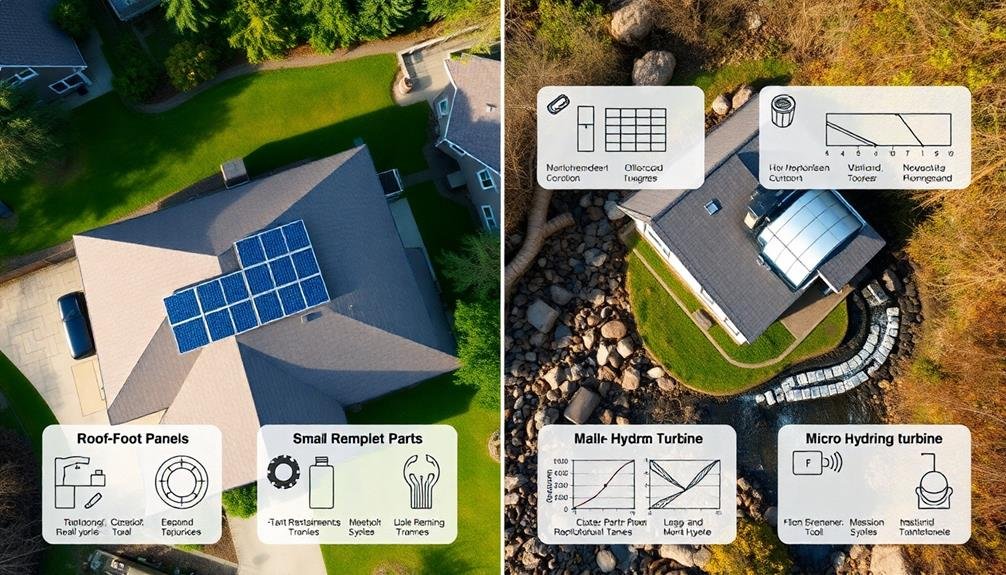
Guaranteeing the longevity of your home energy system requires consistent maintenance and care. For micro-hydro systems, you'll need to regularly clean debris from the intake, inspect the penstock for leaks, and check the turbine for wear.
You should also monitor water flow rates and adjust the system accordingly. Lubricate moving parts and replace seals as needed to prevent water damage.
Solar systems demand less frequent maintenance but still require attention. Clean your panels every few months to maintain peak efficiency, especially in dusty or polluted areas.
Inspect wiring connections annually and tighten if necessary. Monitor your inverter's performance and replace it after 10-15 years.
Both systems benefit from professional inspections every 3-5 years. With proper care, micro-hydro systems can last 20-30 years, while solar panels often come with 25-year warranties.
Inverters and batteries typically need replacement sooner. Keep detailed maintenance records and stay informed about technological advancements.
As your system ages, you may find it beneficial to upgrade components for improved efficiency and output. By prioritizing maintenance, you'll maximize your system's lifespan and guarantee reliable, clean energy for years to come.
Climate and Geography Considerations
When selecting a home energy system, climate and geography play crucial roles in determining the most effective solution.
For micro-hydro systems, you'll need a consistent water source with sufficient flow and head (vertical drop). This makes them ideal for hilly or mountainous regions with year-round streams or rivers. However, they're not suitable for arid areas or locations with seasonal water fluctuations.
Solar systems, on the other hand, are more versatile but heavily dependent on sunlight availability. They're excellent choices for sunny climates with minimal cloud cover. Even in less sunny areas, modern solar panels can still generate significant power.
However, you'll need to take into account factors like shading from nearby structures or trees, and your roof's orientation and pitch.
Climate extremes also impact system performance. Micro-hydro systems may freeze in severe cold, while excessive heat can reduce solar panel efficiency.
Wind patterns affect both: strong winds might damage solar panels, while they could increase water flow for micro-hydro.
Additionally, local regulations and grid connectivity options vary by location, influencing your decision. Always consult local experts to assess your specific site's potential for each system type.
Energy Storage Options
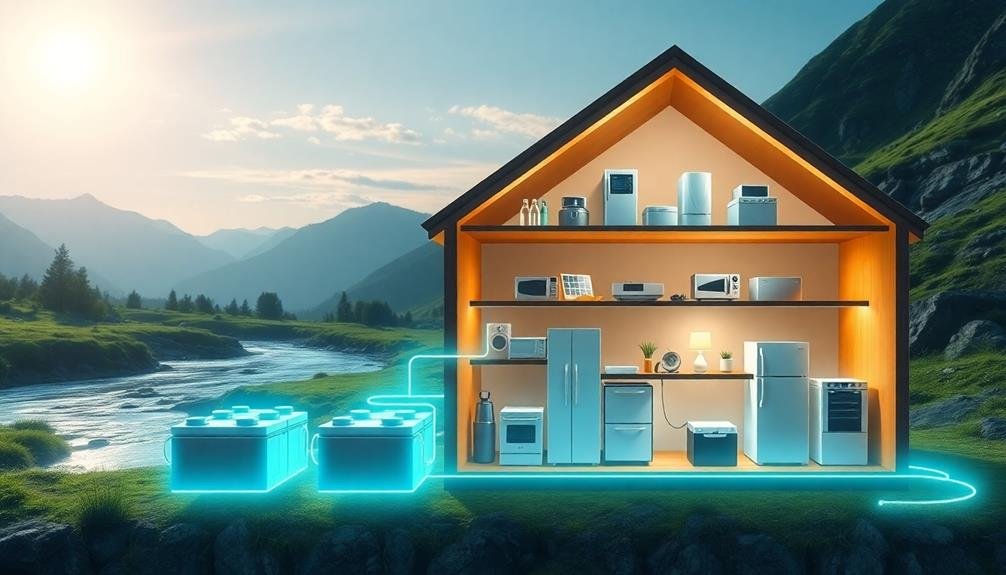
Energy storage is at the heart of an effective home energy system. Whether you've chosen micro-hydro or solar, you'll need a way to store excess energy for use during periods of low production. The most common option is a battery bank, typically using deep-cycle lead-acid or lithium-ion batteries.
Lead-acid batteries are more affordable but have a shorter lifespan, while lithium-ion batteries are more expensive but offer better performance and longevity.
For micro-hydro systems, you might consider a pump-storage setup, where excess energy pumps water to an elevated reservoir for later use.
Solar systems can benefit from thermal storage, using excess electricity to heat water or other materials for later use in heating or cooling your home.
If you're grid-connected, you may not need extensive storage as you can rely on the grid when your system isn't producing.
However, if you're off-grid, you'll need to size your storage system carefully to guarantee you have enough power during low production periods.
Consider your daily energy needs, system output, and backup requirements when choosing your storage solution.
Government Incentives and Regulations
How can government policies affect your home energy system? Government incentives and regulations play an important role in shaping your decision to invest in micro-hydro or solar energy. Many countries offer tax credits, grants, and rebates to homeowners who install renewable energy systems. These financial incentives can greatly reduce your upfront costs and improve the return on investment.
Net metering policies allow you to sell excess electricity back to the grid, potentially lowering your energy bills. Some areas also have renewable energy mandates, requiring utilities to source a percentage of their power from clean sources. This can create a more favorable market for home energy systems.
However, regulations can also present challenges. You'll need to navigate zoning laws, building codes, and permit requirements specific to your area. Some localities may have restrictions on the size or placement of solar panels or micro-hydro installations.
Environmental regulations could impact micro-hydro projects, especially if they affect local waterways.
It's vital to research your local and national policies before committing to a home energy system. Consult with energy professionals or local authorities to confirm your project complies with all relevant regulations and takes full advantage of available incentives.
Choosing the Right System
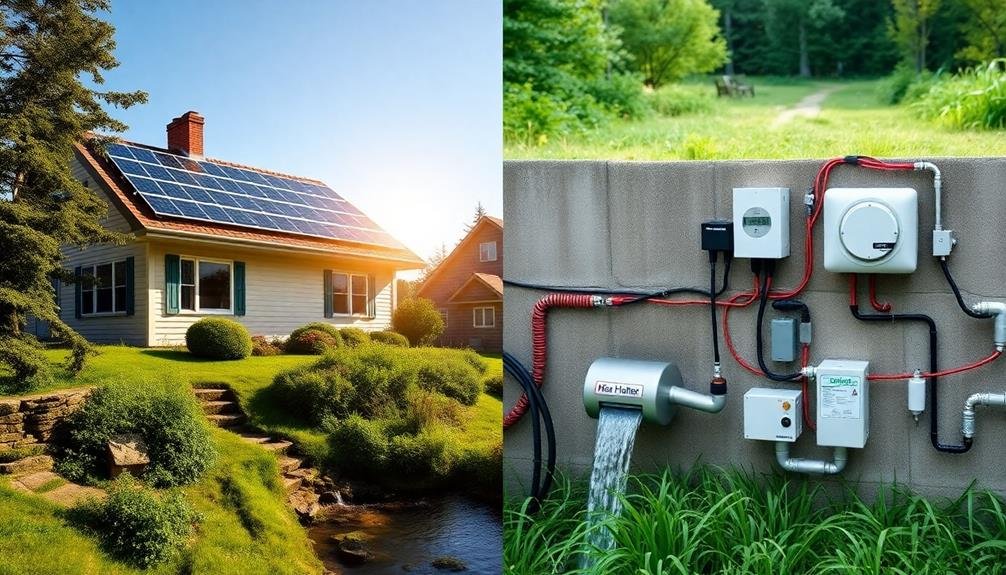
When choosing a home energy system, you'll need to evaluate your household's energy consumption patterns.
Consider your location's climate and available natural resources, such as sunlight for solar panels or wind for turbines.
You should also factor in your property's characteristics, including roof orientation and available space, to determine the most suitable energy system for your home.
Assess Your Energy Needs
Before diving into home energy system options, it's crucial to accurately assess your household's energy needs. Start by reviewing your past electricity bills to understand your average monthly consumption. Pay attention to seasonal variations, as your energy use may fluctuate throughout the year.
Next, create a thorough list of all electrical appliances and devices in your home. Include their wattage and estimated daily usage time. This inventory will help you calculate your total energy requirements and identify potential areas for energy conservation.
Consider your future energy needs as well. Are you planning to add new appliances or electric vehicles? Will your family size change? Factor these potential increases into your calculations to make sure your chosen system can accommodate future demands.
To get a clearer picture of your energy needs:
- Use an energy monitoring device to track real-time consumption
- Conduct an energy audit to identify inefficiencies and potential improvements
- Consult with a professional energy assessor for expert advice
Location and Resource Availability
Your location and available resources play an essential role in determining the most suitable home energy system for your needs. For micro-hydro systems, you'll need access to a consistent water source with adequate flow and head (vertical drop). Solar systems require sufficient sunlight exposure throughout the year.
Reflect on these factors when evaluating your location:
| Factor | Micro-Hydro | Solar |
|---|---|---|
| Climate | Year-round water flow | Sunny days per year |
| Terrain | Slope for water flow | Unobstructed roof/land |
| Space | Room for turbine | Roof/ground area for panels |
| Regulations | Water rights, permits | Zoning laws, HOA rules |
Examine your property's characteristics to determine which system is more viable. For micro-hydro, measure your stream's flow rate and head. For solar, evaluate your roof's orientation, angle, and shading. You'll also need to check local regulations and permits for both options.
Don't forget to reflect on seasonal variations. Micro-hydro systems may be affected by drought or freezing, while solar output can decrease during winter months or in cloudy climates. By thoroughly examining your location and available resources, you'll be better equipped to choose the most effective and efficient home energy system for your specific situation.
Frequently Asked Questions
Can I Combine Micro-Hydro and Solar Systems for My Home?
Yes, you can combine micro-hydro and solar systems for your home. It's called a hybrid system and can provide more consistent energy. You'll harness power from both water and sun, increasing your energy independence and reliability.
How Noisy Are Micro-Hydro Systems Compared to Solar Panels?
You'll find micro-hydro systems noisier than silent solar panels. They produce a constant humming sound from the turbine. However, you can reduce noise by properly insulating the powerhouse and using sound-dampening materials around the system.
Do These Systems Affect Property Values or Insurance Rates?
You'll find that both systems can affect your property value and insurance rates. They're often viewed positively, potentially increasing home value. However, insurers may adjust rates based on installation quality and potential risks associated with each system.
What Happens to Excess Energy Generated by Either System?
You'll often feed excess energy back into the grid, earning credits on your utility bill. If you're off-grid, you'll need batteries to store surplus power for later use. Some systems can also divert excess to heat water.
Are There Any Health Risks Associated With Living Near These Systems?
You'll be glad to know there aren't significant health risks associated with living near these systems. They're generally safe, but it's always wise to follow manufacturer guidelines and local regulations for installation and maintenance.
In Summary
You've explored the ins and outs of micro-hydro and solar energy systems. Now it's time to decide which one's right for your home. Consider your location, budget, and energy needs. Don't forget to factor in environmental impact and long-term efficiency. Remember, there's no one-size-fits-all solution. Weigh the pros and cons carefully, and don't hesitate to consult with experts. With the right choice, you'll be powering your home sustainably for years to come.
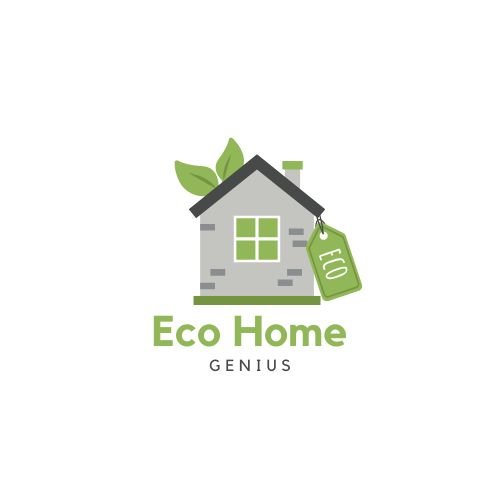
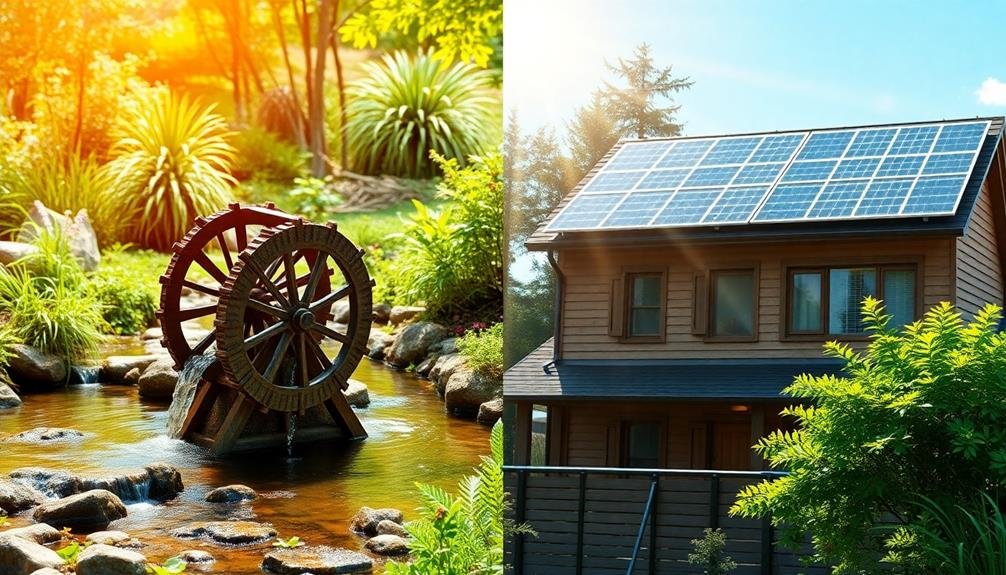
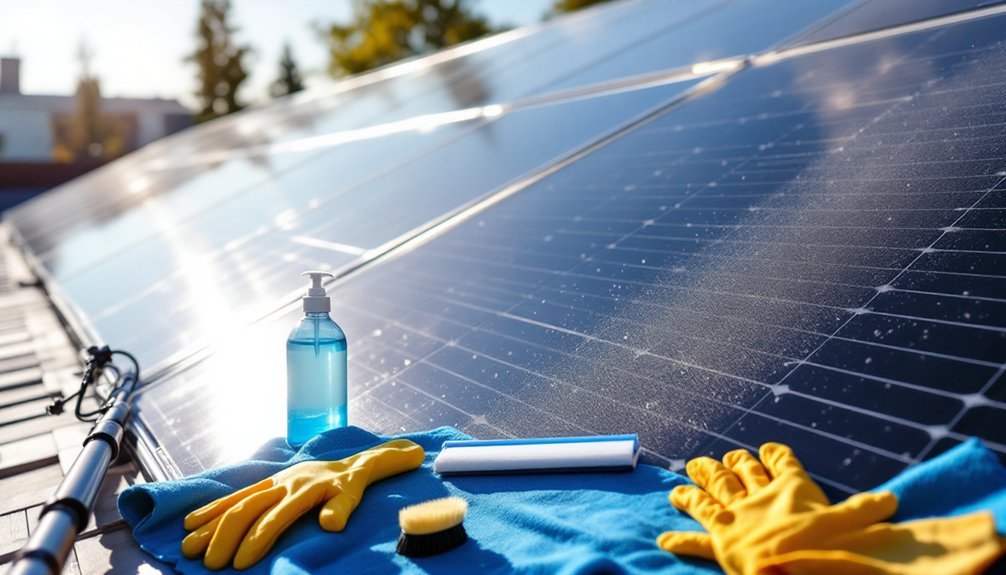
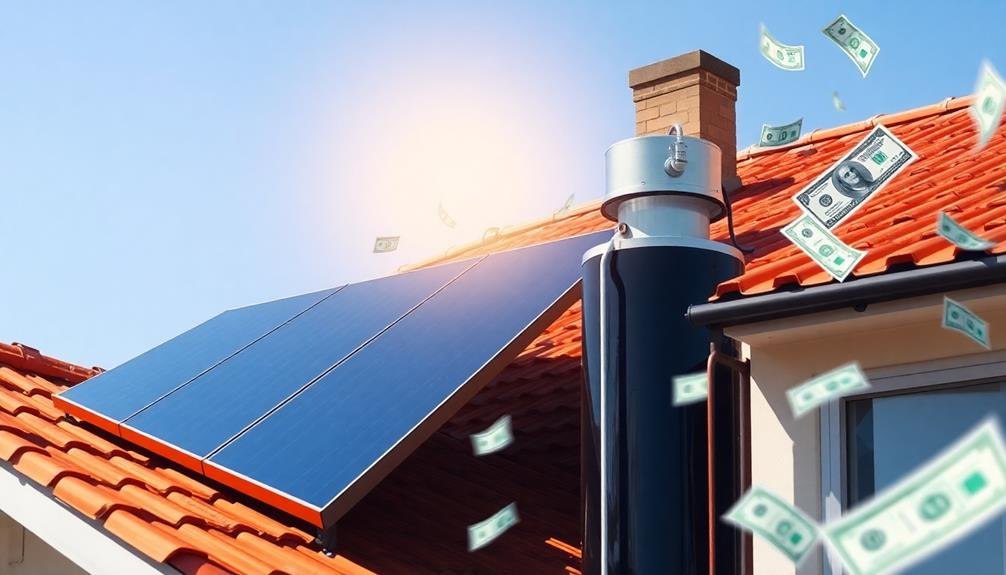
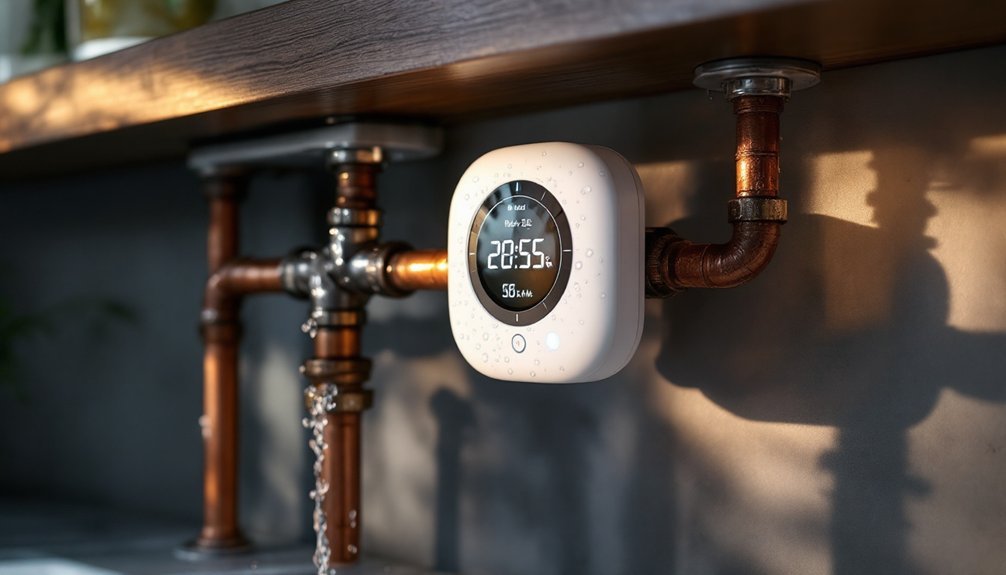
Leave a Reply